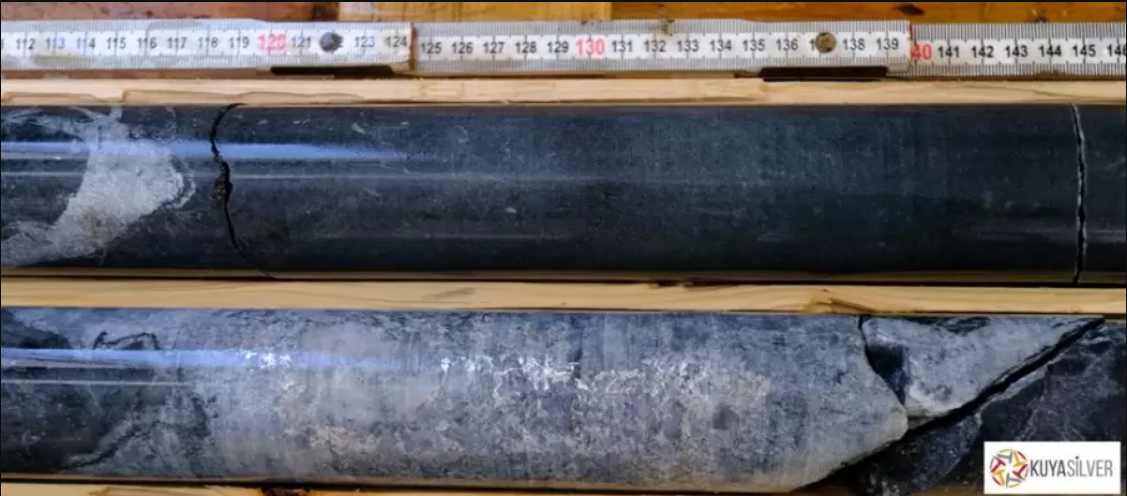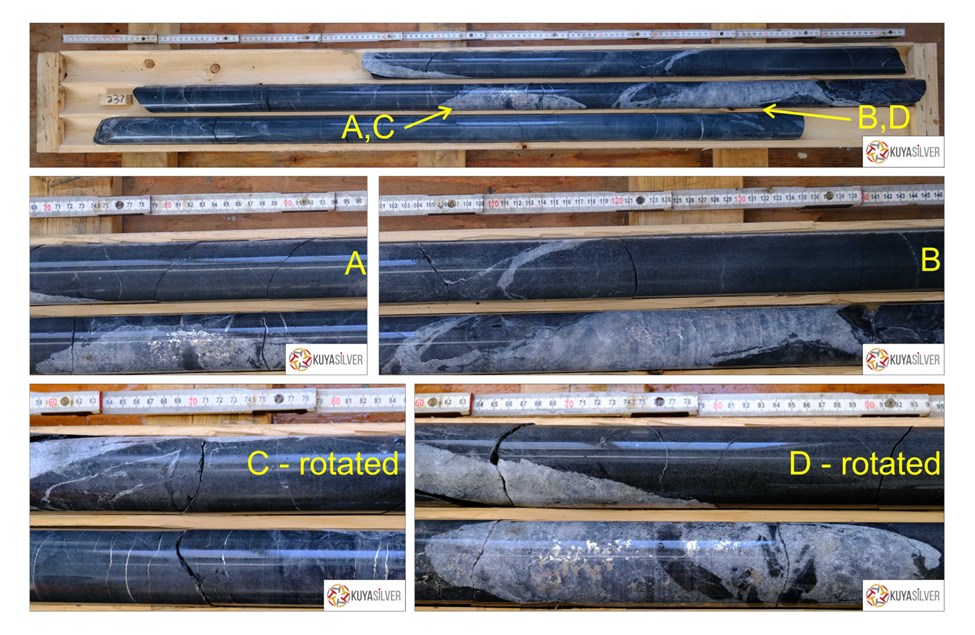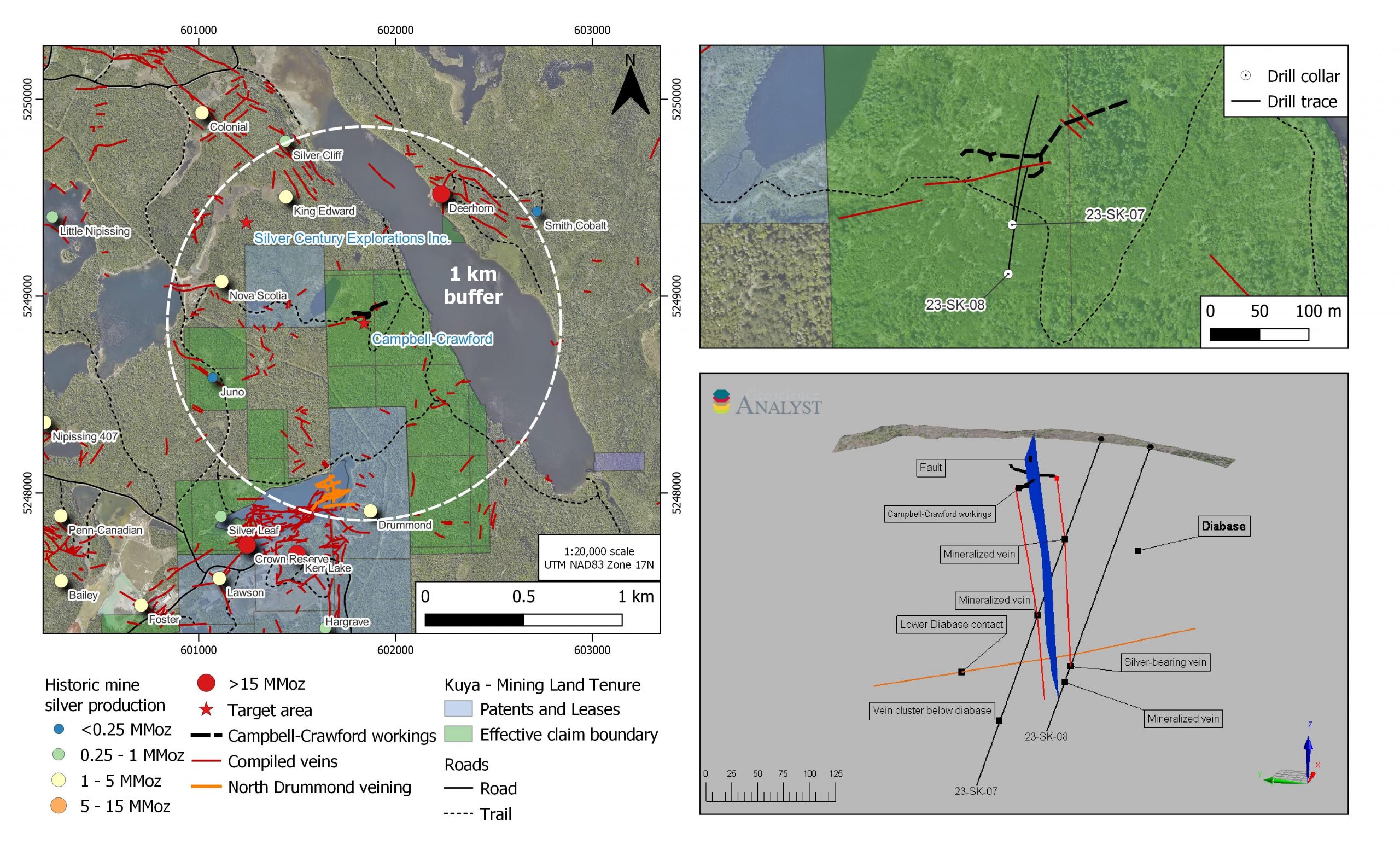Kuya Silver (CSE:KUYA) has made an exciting new discovery at its Campbell-Crawford area of the Silver Kings Project in the Cobalt, Ontario mining camp. The company has intersected native silver mineralization in drill core, signalling the potential for a significant new source of silver in the region.
The discovery is located within a 1 km radius of five major mines that have produced a total of 48.2 million ounces of silver historically. This is a highly promising development for Kuya Silver, as it suggests that the area may have a wealth of untapped resources that could be exploited for commercial gain.
According to the company’s latest announcement, the new discovery is less than 1 km north of the North Drummond area and 750 m southeast of a 1,300 oz/t silver intercept from 1981 underground drilling by Silver Century Explorations Ltd. This makes it a highly strategic location, with the potential to yield significant amounts of silver for years to come.

David Lewis, Kuya Silver’s Exploration Director, commented in a press release: “Despite more than a century of intensive mining and exploration, the legendary Cobalt mining camp can still generate exciting results. The Campbell-Crawford area was known to host low-grade mineralization on surface and in shallow exploration tunnels, but it had never been tested systematically. Work by Kuya Silver personnel in 2022 identified the area to host favorable structures for mineralization, particularly at depth (specifically at the lower contact of the Nipissing Diabase), and two drill holes were planned to test near this contact.”

“The first drill hole (23-SK-07) intersected previously known, narrow mineralized veins adjacent to a fault within the diabase, then the lower diabase contact, then four previously unknown narrow mineralized veins at depth. The second hole (23-SK-08), which was stepped back and drilled beneath the first drill hole, intersected the first of the previously known veins immediately below the diabase contact. We were very excited to see the silver mineralization in drill core, confirming our exploration model for the area.”

Highlights from the results are as follows:
- Native silver was intersected in the second drill hole at the Campbell-Crawford area and drilling is ongoing along trend
- Mineralization in this vein appears to be primarily native silver, but minor cobalt mineralization is also recognized
- Silver stringers occur above and below the silver vein, significantly increasing the potential width of mineralization
- Drill intersection was made 170 m below the nearest underground workings (1910s exploratory tunnelling) and 230 m below surface
- The Campbell-Crawford area, despite being surrounded by historic mines and mineral occurrences, has remained virtually untested since exploration occurred in the early twentieth century and the area has never been mined
- Assay results are pending
The above references an opinion and is for information purposes only. It is not intended to be investment advice. Seek a licensed professional for investment advice. The author is not an insider or shareholder of any of the companies mentioned above.
If you would like to receive our free newsletter via email, simply enter your email address below & click subscribe.
CONNECT WITH US
Tweets
Tweet with hash tag #miningfeeds or @miningfeeds and your tweets will be displayed across this site.
MOST ACTIVE MINING STOCKS
Daily Gainers
 Azincourt Energy Corp. Azincourt Energy Corp. |
AAZ.V | +50.00% |
      |
ADD.AX | +50.00% |
      |
ERA.AX | +50.00% |
      |
DEV.AX | +31.82% |
      |
CASA.V | +30.00% |
      |
RMD.V | +25.00% |
      |
BMG.AX | +25.00% |
      |
CUL.AX | +25.00% |
      |
NOW.V | +22.81% |
      |
ACS.V | +22.58% |

 Follow us on Twitter
Follow us on Twitter Become our facebook fan
Become our facebook fan







